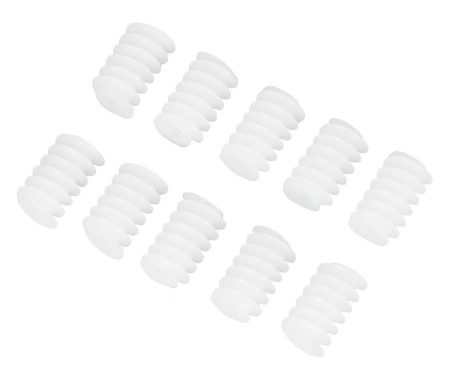Spis treści:
Gears are used in machines to change speed and torque. We come across the term “torque” quite often – it is the amount of force that causes an object to rotate around an axis of rotation. It is expressed in units of force multiplied by units of length. Universal representation? The SI Niutonometer (Nm). The greater the torque, the more difficult it is to stop or change the object’s rotational motion. Using motor vehicles as an example, more torque allows for easier acceleration especially under heavy loads, such as when driving on a hill.
Gears in mechanics
Let’s expand the first sentence of the paragraph a bit. The main purpose
of gearboxes
is to transmit rotary motion from one component to another while changing speed and torque. The idea is that the gearbox allows the motor speed to be adjusted to meet the requirements of a specific application. In a car, the transmission allows you to transfer the right amount of torque to the wheels, and this will allow you to start from a standstill and maintain a constant speed on different types of pavement.
It is due to this characteristic that gears are widely used in equipment and machinery such as cars, bicycles, industrial machinery and home appliances. Gears can be mechanical, hydraulic, or electric. Each type of gearbox has its own application and characteristics to effectively transmit rotary motion under different conditions.
Worm gears - how do they work?
Bearing an unusual name, the “worm gear” is barely a component of a larger machine component – the worm gear. Sometimes it is confused precisely with the entire transmission. It consists of two main components: the worm (worm screw) and the gear (worm wheel).
A worm is a helically wound screw that rotates around its axis. When the worm-rotor rotates, it moves along the axis of rotation, simultaneously moving the toothed wheel. This wheel, the eponymous worm wheel, is a component with teeth adapted to interact with a wound worm. More precisely – when the worm rotates, the teeth on the circular element are forced to rotate with it, causing the wheel to rotate. Gearboxes designed in this way can transmit high torque, which means they can be used to turn large and heavy objects, and also offer a high gear ratio, which significantly reduces speed while increasing torque. It is interesting to note that we find them both in heavy industry, transportation and energy, which is not surprising and is connected with the term “large and heavy objects”, as well as in kitchen mixers or juice squeezers.
Self-braking of the worm gearbox
An interesting property of worm gears is self-braking (often mistakenly self-locking), which occurs under certain conditions – but not always. Self-braking is the ability of a device or system to control its motion and behavior without external intervention. In the context of mechanical transmissions, such as worm gears, self-braking refers to the ability of a gear to stop or brake rotary motion without the need for additional braking devices. Self-braking gearboxes, including worm gearboxes, have built-in mechanisms that allow them to stop automatically at a specific position when the power supply ceases or when subjected to external resistance forces. It’s a thing that’s especially useful for applications where precise stopping or maintaining a specific position is crucial, such as in mechanisms for precisely lifting, lowering and holding a load in a fixed position without continuous power.
Thanks to self-locking, such gears can stop movement even under load, which contributes to safe and stable operation of the device. It is also accidental when, as a result of poor lubrication, the coefficient of friction exceeds the permissible value and the transmission begins to brake. Certainly, on the other hand, it is not only wrong but also dangerous to equate this feature with the brake function of the system. The drive train with a suspended load is accelerated, and when the drive is turned off, the load may not stop, but fall, propelling the system and accelerating the load. It is worth remembering that when the efficiency of the gearbox is less than zero, it means the inability to transmit in a given direction, i.e. self-braking.
Choosing a worm gearbox
Torque is an absolute cornerstone, which is why we described it in a bit more detail in the introduction. Make sure the worm gear has enough torque to meet the application requirements. It must be adapted to the loads it will encounter during use. If possible, it’s a good idea to run load tests on the gearbox under real-world conditions to evaluate its performance and see if the torque is as expected.
The observed actual efficiency of the gearbox will provide information about energy losses in the process of transmitting motion. If the gearbox will be used in a food, chemical or heavy industry environment, all factors must be considered. The first ones to think about here are moisture, dust, exposure to corrosion and size. Gears that are too large or too heavy can be impractical or difficult to install, and the choice of perishable materials with little wear and corrosion resistance and no availability of replacement parts are inevitable problems.
Gears in assembly electronics
Mechanical gears, including worm gears, are also hosted in assembly electronics, DIY projects and amateur robotics. They are used to change the speed of movement, control mounting elements in automation and adjust the viewing angle of cameras. You may also be tempted to do DIY projects with moving mechanisms – robots, gates, automatic toy doors and art projects. W Botland you will find them in the categories
Mounting elements
i
Gears
.
How useful was this post?
Click on a star to rate it!
Average rating 0 / 5. Vote count: 0
No votes so far! Be the first to rate this post.







